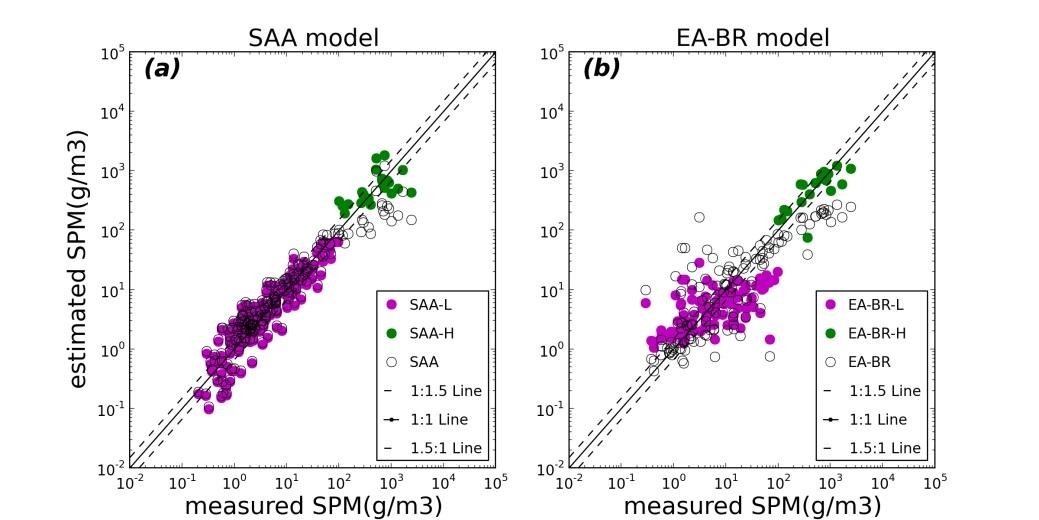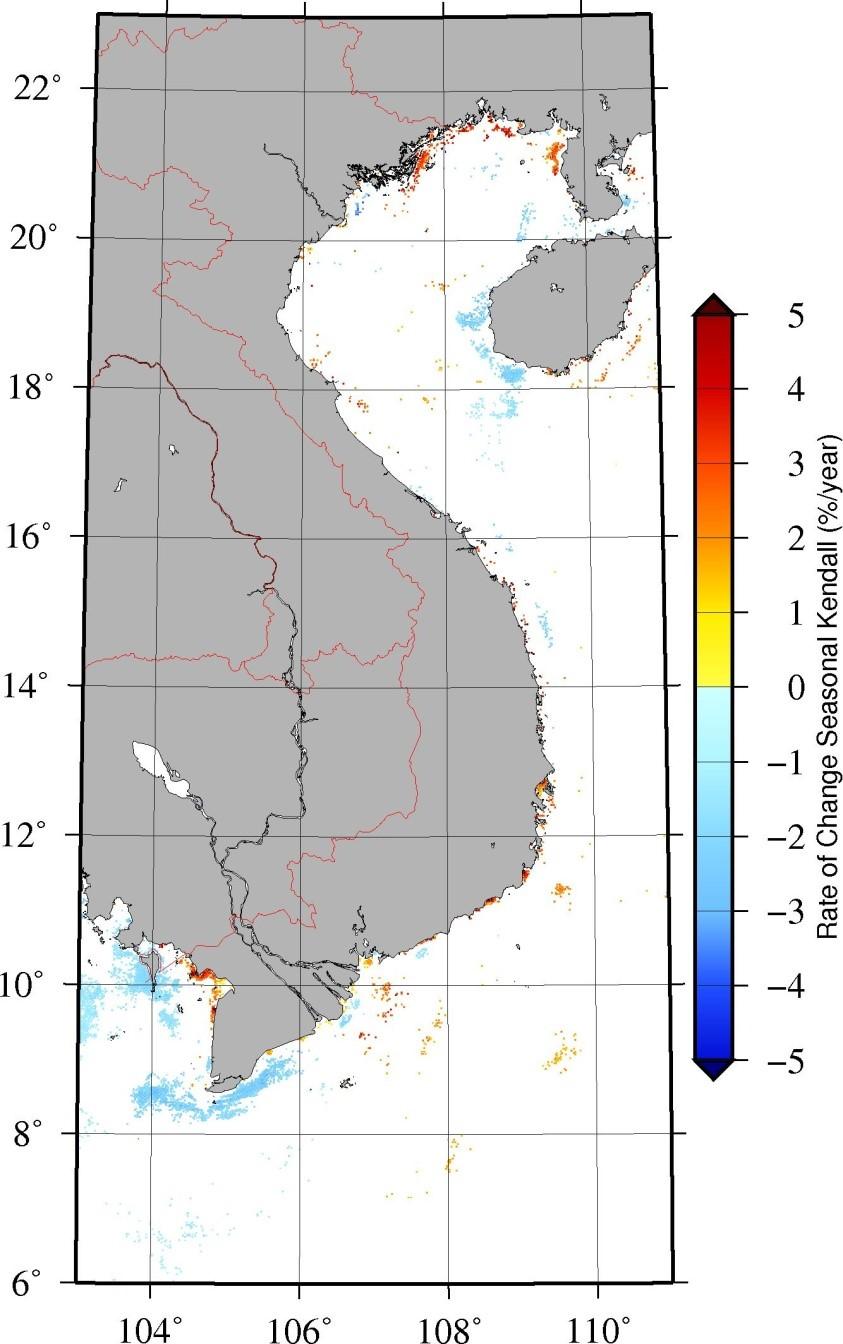Oceanographic survey organized by the IRD (lab. LEGOS, Toulouse) with LOG (Wimereux) and Vietnamese partners from the Vietnamese Academy of Science and Technology (VAST): Institute of Marine Environment and Resources (IMER, Haiphong), Institute of Oceanography (IO, Nha Trang), University of Science and Technology of Hanoi (USTH). Campaign carried outby a French-Vietnamese scientific team within the VITEL project funded by TOSCA (CNES), with the support of IRD.
The objective was to study the optical properties of coastal water bodies and develop innovative bio-optical algorithms for water quality parameters.
The data collected were transmitted to SISMER (https://doi.org/10.17600/14004100), and the optical and biogeochemical parameters were integrated into a global LOG database (ANR GLOBCOAST project) which allows, in addition to regional studies, to propose global bio-optical algorithms.
The following works have been published:
- Global algorithm for the estimation of Suspended Particulate Matter (SPM) in turbid coastal waters, established from a database including VITEL campaigns in Vietnam but also campaigns carried out in Europe, Guyana, Canada and China. The diversity of coastal environments affected by different physical and biogeochemical processes (resuspension, phytoplankton blooms) and fed by several rivers (Mekong, Red River, Amazon, Yellow River, MacKenzie, Loire etc.) allowed Han et al. (2016) to propose a generic algorithm adapted to a wide range of turbidity. This global algorithm is split in two depending on the turbidity level of the observed waters, due to the saturation of the red band for high turbidities which then requires its substitution by a near infrared band. Two formulas are proposed based on criteria related to threshold values of the red reflectance, and a hybrid formula is available between them (see SAA, Fig. 1). The coefficients are given for applications to water color sensors (SeaWiFS, MODIS-A/T, MERIS/OLCI, VIIRS) and high spatial resolution sensors (Landsat8-OLI, Sentinel2-MSI).

Figure 1. Comparison of the measured and inversed Suspended Particulate Matter (SPM) values when (a) SAA, a semi-analytical algorithm, and (b) EA-BR, an empirical algorithm, are applied to the in situ data set including VITEL dataset. Open, green, and pink circles stand for the version of each model developed over the Whole, High and Low SPM ranges, respectively. Solid lines represent 1:1 line and dashed lines represent 1.5:1, 1:1.5 lines (Han et al., 2016)
- Quantification of DOC (dissolved organic carbon) from the absorption properties of the colored part of the dissolved organic matter (aCDOM) in coastal waters. Vantrepotte et al. (2015) show that it is possible, under certain assumptions, to quantify DOC from the spectral slope of aCDOM in the UV, or from the ratio of aCDOM(412)/DOC. Relationships have been developed from 158 stations in the English Channel, French Guiana and Vietnam, and their application to data collected in Polynesia, the Mediterranean, Chesapeake Bay, the Gulf of Maine and the Atlantic shows that they allow DOC to be recovered from in situ CDOM data with an average error of 16% over highly contrasted waters. Their applicability to satellite data is also developed and discussed.
- Analysis of chlorophyll-a concentration variability in Vietnamese coastal waters from the MERIS ocean color sensor (2002-2012). After testing several algorithms on bio-optical and Chl-a data acquired along the Vietnamese coast, Loisel et al. (2017) applied the OC5 algorithm of Gohin et al. (2002) to the MERIS archive. From the 11-year Chl-a climatology, the seasonal variability, long-term trend, and irregular component of variability were described using the Census-X-11 time series decomposition method. Simulations from a three-dimensional hydrodynamic numerical model were used to complete the analysis. The seasonal contribution, which dominates the signal variance, evolves as the dynamics of the mixing layer depth, affected by upwelling events in summer monsoon. The irregular variability of Chl-a, which can reach up to 35% of the total variance in the central part of the Vietnamese coast, can be explained by the surface kinetic energy and its standard deviation that is associated with small-scale processes. A long-term monotonic trend of about 4-5%.yr-1 (i.e., 40-50% from 2002 to 2012) was observed in different coastal areas where aquaculture activities show a concomitant increase, ranging from 31% to 113% (in production weight) (Fig. 2). However, in situ measurements, especially of nutrients, are needed to confirm the link between aquaculture activities and long-term changes in phytoplankton biomass.

Fig. 2. Significant monotonic trend in % per year (seasonal Kendal test, p< 0.05) of Chl-a. Non-significant areas are represented in white.
- Algorithm for estimating Suspended Particulate Matter (SPM) in turbid river and coastal waters of Vietnam using the NAOMI sensor on the VNRedSat-1 satellite. The first Vietnamese satellite of Earth observation, VNRedSat-1, launched in 2013, includes a 4-band sensor with three visible bands similar to SPOT at 10m resolution. Ngoc et al (2020), based on measurements made during the VITEL campaigns, proposed a quantification algorithm of SPM adapted to Vietnamese continental and coastal waters based on the Red/Green band ratio. It is validated on match-ups of in situ and Landsat-8/OLI data, and some illustrations of this algorithm to the observation of floods are presented.
Our Vietnamese partners, present on board and in the analysis and valorization phase, are co-authors of the articles Loisel et al (2017) and Dat et al (2020) dedicated to the study of the regional variability of coastal water quality.
Several students were involved in these analyses, including Bing Han (post-doc) and Dinh Ngoc Dat (PhD).




